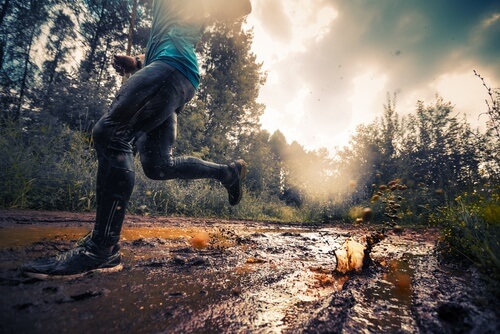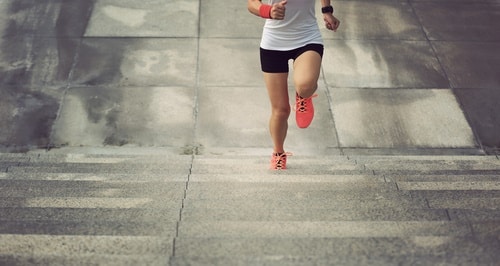Best Running Shoes For Shin Splints
This page contains affiliate links. As an Amazon Associate I earn from qualifying purchases.
Running is probably one of the healthiest and simplest forms of exercise. All you need for a good run is a pair of reliable shoes. However, this enjoyable sport has its downsides too.
To begin with, different people have different feet types and that gives rise to varying needs. In order to meet these needs, sports shops are equipped with a large variety of running shoes.
Running with the wrong shoes on, invariably causes more harm than good, while the right shoes give you a wonderful running experience.
Quick Navigation
At a Glance:
Our Top Picks for Best Running Shoes For Shin Splints
| IMAGE | PRODUCT | DETAILS | ||
|---|---|---|---|---|
BEST OVERALL | BEST OVERALL |
| View on Amazon → | |
BEST AFFORDABLE 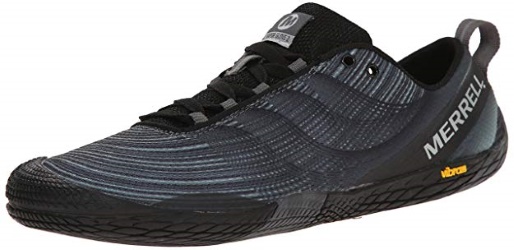 | BEST AFFORDABLE |
| View on Amazon → | |
BEST FOR MEN | BEST FOR MEN |
| View on Amazon → | |
BEST FOR WOMEN 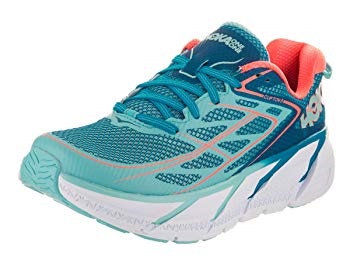 | BEST FOR WOMEN |
| View on Amazon → | |
BEST FOR PRONATION AND KNEE PAIN 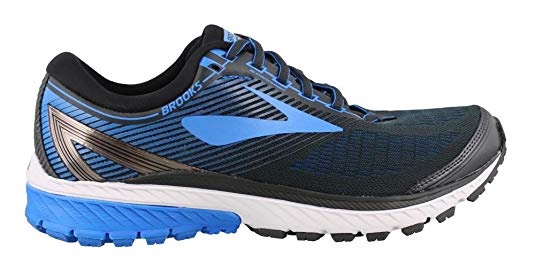 | BEST FOR PRONATION AND KNEE PAIN |
| View on Amazon → |
Our Criteria for Getting the Best Running Shoes for Shin Splints
The shoes that can help repair your shin splints should ease your pain, absorb shock and give you very good running form. Finding them may not be easy, but there are some things you should look out for in an ideal pair of running shoes for shin splints.
- Size – The best running shoes for shin splints should fit you comfortably even when worn for hours. You must test the shoes for its size before purchasing it so as to ensure that it fits perfectly.
- Cushioning – The best running shoes for shin splints should be adequately cushioned to offer you comfort. Cushioning that is too soft or too hard could worsen your condition and even make it very hard to run.
- Material – The kind of material used in manufacturing the shoe should be light, breathable, comfortable, attractive and very durable.
- Sole – A well-manufactured sole should offer protection, durability, comfort and good quality.
Best Rated Running Shoes For Shin Splints Reviewed
Getting the best running shoes for your shin splints requires a lot of research, patience and time.
Having the best running shoes could help your shin splints repair itself faster. In order to help you, we have compiled a reliable list to make your search for the best running shoes a lot easier.
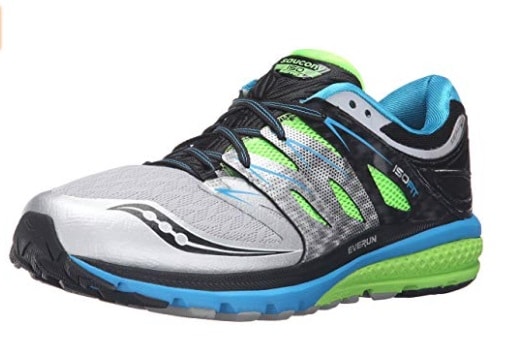
- Offers stability
- Cushy
- Lightweight
- Great grip
- Fits snugly
- Sized really small
- Quite narrow
- Offers stability
- Cushy
- Lightweight
- Great grip
- Fits snugly
- Sized really small
- Quite narrow

- Has a zero-drop foot bed
- Its sole is very thin and sensitive
- Lightweight
- Provides good traction
- Washable
- Not quite durable
- Narrow toe box
- Has a zero-drop foot bed
- Its sole is very thin and sensitive
- Lightweight
- Provides good traction
- Washable
- Not quite durable
- Narrow toe box
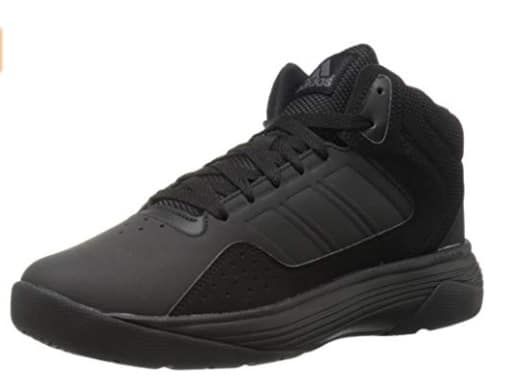
- Offers very good cushioning
- Has a well-gripped rubber sole
- Super lightweight
- Comfortable
- Very flexible
- Rubber sole comes off easily
- Not a good fit
- Offers very good cushioning
- Has a well-gripped rubber sole
- Super lightweight
- Comfortable
- Very flexible
- Rubber sole comes off easily
- Not a good fit

- Provides great foot strike
- Lightweight
- Very cushy
- Great for runners suffering from shin splints
- Gives comfortable stability
- Feels stiff and rigid
- Quite small for some runners
- Provides great foot strike
- Lightweight
- Very cushy
- Great for runners suffering from shin splints
- Gives comfortable stability
- Feels stiff and rigid
- Quite small for some runners

- Offers great ankle stability from the heel collar
- Well-cushioned
- Very flexible
- Fits perfectly
- Breathable
- Lace holes are not wide enough
- Limited colors to choose from
- Offers great ankle stability from the heel collar
- Well-cushioned
- Very flexible
- Fits perfectly
- Breathable
- Lace holes are not wide enough
- Limited colors to choose from
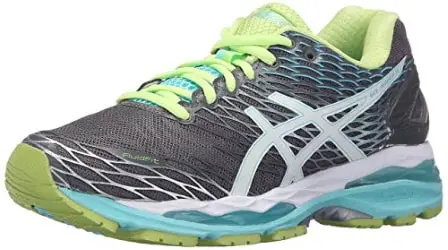
- Has energizing cushioning
- Great shock absorbance
- Very good moisture absorbance
- High traction
- Very durable
- Quite heavier when compared to other shoes
- Pricey
- Has energizing cushioning
- Great shock absorbance
- Very good moisture absorbance
- High traction
- Very durable
- Quite heavier when compared to other shoes
- Pricey
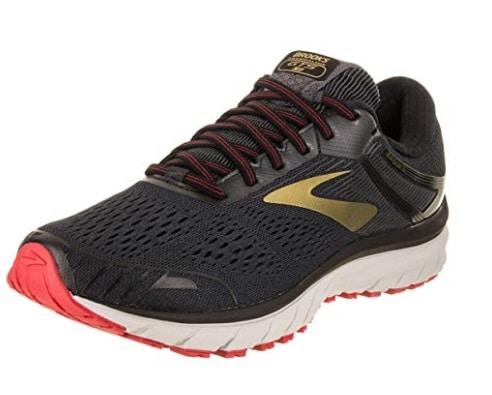
- Lightweight
- Dries-up quickly
- Has many color options
- Excellent cushioning
- Its midfoot saddle is both adjustable and asymmetrical
- Sole material is too thin, soft and not durable
- Not very supportive around the arch
- Shallow toe box
- Lightweight
- Dries-up quickly
- Has many color options
- Excellent cushioning
- Its midfoot saddle is both adjustable and asymmetrical
- Sole material is too thin, soft and not durable
- Not very supportive around the arch
- Shallow toe box
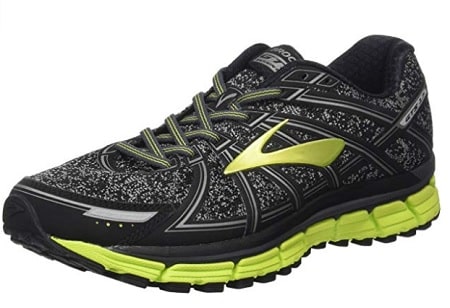
- Great cushioning
- Gives the body perfect alignment while running
- Mid-foot adjustable saddle
- Has a well-ventilated mesh that keeps your feet cool and dry
- Very light and sleek
- Narrow toe box
- Rubber splits from bottom
- Great cushioning
- Gives the body perfect alignment while running
- Mid-foot adjustable saddle
- Has a well-ventilated mesh that keeps your feet cool and dry
- Very light and sleek
- Narrow toe box
- Rubber splits from bottom
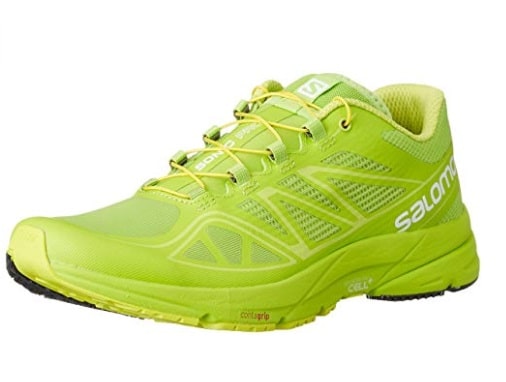
- Protective rubber toe cap
- Very good grip
- Lightweight
- Waterproof and anti-debris mesh
- Has an outsole made of mud grip
- Unsuitable for wide feet
- Not good on long trail runs
- Too skinny and small
- Protective rubber toe cap
- Very good grip
- Lightweight
- Waterproof and anti-debris mesh
- Has an outsole made of mud grip
- Unsuitable for wide feet
- Not good on long trail runs
- Too skinny and small
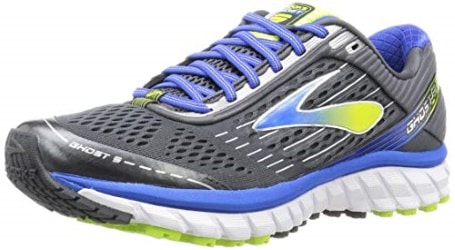
- Offers good traction
- Cushy
- Has great bounce-back
- Convenient for inserting orthotics
- Neutral shoe
- Not rightly sized
- Large toe box
- Not quite durable
- Offers good traction
- Cushy
- Has great bounce-back
- Convenient for inserting orthotics
- Neutral shoe
- Not rightly sized
- Large toe box
- Not quite durable
What Exactly are Shin Splints?
Shin splints can be seen as a collective stress disorder, which causes pain that is felt on the front bone of your shin or lower leg.
It could be anterior (on the front outside part of the leg) or medial (on the front inside part of the leg). The pain caused by this condition could be moderate to severe.
In moderate cases, wearing the right shoe can easily make you feel much better. In severe cases, however, the pain could keep you off your feet and away from your favorite sport for some time. Shin splints are at their worst when you try to forcibly lift up and flex your foot at the ankles.
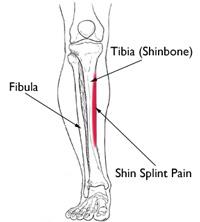
Causes of Shin Splints
Shin splints often occur when your leg muscles and tendons are tired. The main causes of shin splints include physical activities that are too strenuous. Some major causes are listed below.
- Too much pressure on the shin bone
- Excessive stress
- Shoe Type
- Overpronation
- Inadequate exercising
- Use of worn-out shoes
- Running on slanted surfaces
Symptoms of Shin Splints

When symptoms of shin splints are noticed, necessary actions should be taken to ensure that the condition is abated. Some symptoms of shin splints in runners are as shown below:
- Dull Pain – This is the most common symptom of shin splints. Dull pain will be felt in different parts of the leg, especially around the shin itself. This pain has been known to linger even more during or after running.
- Pain while running – When the condition is at its early stage, pain is experienced while running or doing any strenuous activity. However, when the condition becomes worse, the pain will be felt even during activities that are not particularly strenuous. At this stage, it is necessary to apply some of the treatment methods included in this article.
- Tenderness and swelling – One of the symptoms of shin splints is a feeling of tenderness in the muscles. The tender area will be warm and red, depending on the intensity of the shin splints. As the blood flow to that area increases, swelling and inflammation may occur. Application of ice or use of anti-inflammatory drugs at an early stage could bring some relief.
- Stiff Muscles and Reduced Flexibility – Stiff muscles are synonymous with shin splints. Muscles become stiff when they are over-stressed. Also, engaging in strenuous terrain running and running too fast could cause stiffening or tightening of the leg muscles. This stiffness will make the muscles inflexible and render motions like bending impossible. The best way to treat this tightening of leg muscles is by giving it some rest or by engaging in light flexibility exercises.
- Intermittent Pain – Pain that increases while running but reduces after resting is a symptom of shin splints. At first, the runner will notice that he or she experiences pain at the beginning of the training session, but the pain will disappear after the training. As time goes by, the duration of the pain increases and the pain-free duration reduces. The runner will, therefore, feel relief sometime after he or she may have rested the leg.
- Stress Fracture – Stress fracture means a bone has cracked. This occurs when the runner does not do anything about the early symptoms of shin splints, causing the pain to become sharp and unbearable. The pain caused by stress fractures is usually in a specific part of the leg.
Treatment of Shin Splints
The best way to treat shin splints is by taking as much time off the hurt leg as possible. Consistency in the treatment options enumerated below will ensure total relief from such painful condition.
- Rest – This is the best treatment for shin splints. It may be necessary to put any form of training or running on hold for a while, depending on the severity of the pain. This should be done until your daily activities become pain-free. Training can then resume gradually. However, if the pain is not intense, you may reduce the intensity and duration of training.
- Use Ice on the Shinbone – In the early stages of shin splints, it is important to massage the shinbone regularly with ice to reduce the inflammation and relax the tendons and muscles.
- Stretch Properly – It is also important to stretch your legs properly so that the bone will not bend. Stretch your legs from time to time to relax the muscles and to avoid the triggering of more pain and discomfort.
- Warm Up Well Before Exercising – It is important to warm up well before embarking upon strenuous exercises. You should make sure that your muscles are well relaxed before commencing training.
- Slowly Increase your Exercise Strength – A sudden increase in the intensity of your exercise can trigger pain and recurrence of the shin splints that you are trying to treat. Let your return to exercising be gradual and not involve anything strenuous so that your body can adjust itself without causing a recurrence. It is important that pain and swellings be reduced significantly before returning to activity.
- Avoid hard surfaces during exercise – Exercises should not be done on hard surfaces like rocks and bare floors to avoid impact. Hard surfaces could also cause bruises.
- Use shoes that are good absorbers of shock – The soles of your shoes should be able to absorb shock and impact from different terrains. The impact from rocks or debris could affect your shins and cause inflammation.
- Use orthotics or removable insoles – The use of orthotics or gel insoles will provide support to your foot’s arch, especially if you had pre-existing issues with your foot.
- Use the Best Running Shoes for Shin Splints – This is one of the best treatments for shin splints. Every runner suffering the pain and discomfort of shin splints should get one of the best shoes available to get optimum comfort and fast relief. Using the right running shoes will also reduce the recurrence of the inflammation.
Final Thoughts
Running is a great sport that has its own positives and negatives that come with it, and shin splints happen to be the latter. However, shin splints are easier to avoid than to treat. Either way, the kind of shoes that you wear has a lot to do with avoiding and treating shin splints. So always try using one of the best running shoes for shin splints as reviewed above, for faster relief.

